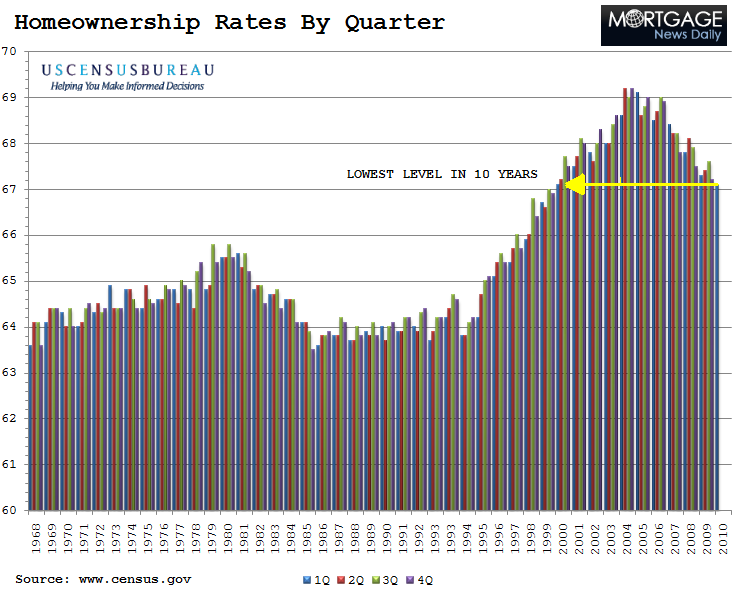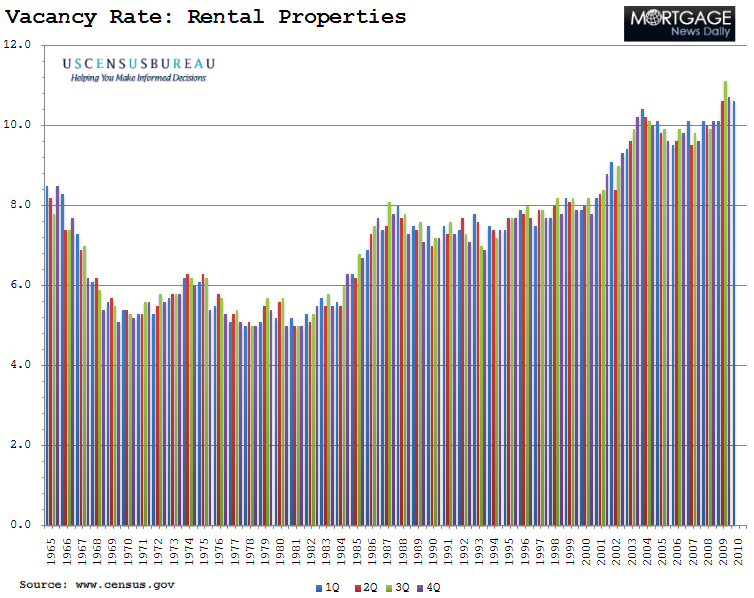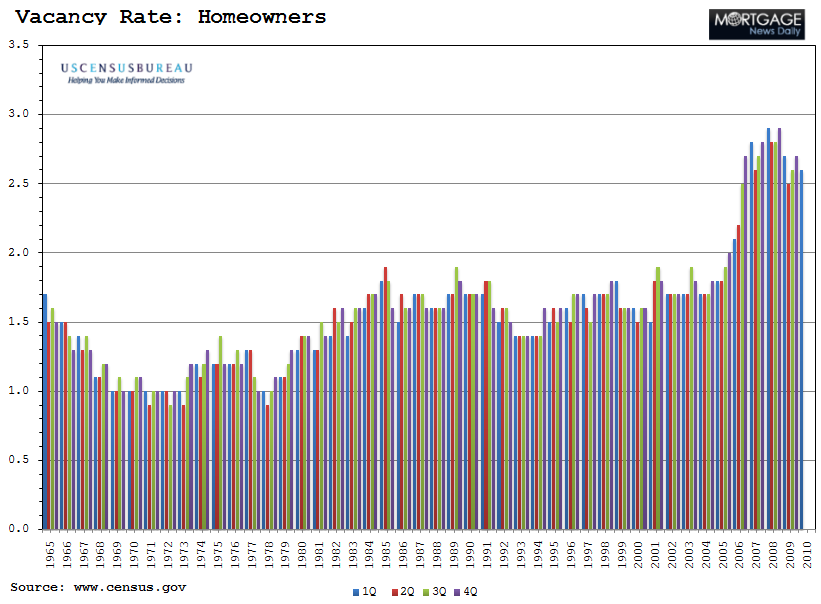The Census Bureau today released Residential Vacancies and Homeownership data for the first quarter of 2010
While vacancy rates are appearing to moderate, home ownership in the U.S. has declined to a level last seen at the beginning of the decade. The greatest decrease is among the youngest homeowners.
The Q1 2010 homeownership rate of 67.1 percent equals the rate recorded during the first quarter of 2000. The recent number is 0.1 percent lower than the rate in the fourth quarter of 2009 and 0.2 percent lower than in the first quarter of 2009. The rate hit its all time high mark of 69.2 percent in both the second and fourth quarters of 2004.
Seniors continue to have the highest rates of ownership. The current rate of 80.6 percent is among the highest rates recorded in the last five years by persons over the age of 65 while the rate of homeownership for persons under 35 years of age was 38.9 percent, the lowest recorded for that age group in the five years for which the census provided data, and down from 40.4 percent one quarter earlier. Those 35 to 44 years of age had a rate of 65.3 percent, down from 65.7 percent in the fourth quarter; while the 45 to 54 age group increased its rate of ownership from 74.0 percent to 74.8 percent and the 55 to 64 cohort improved to 79.1 percent from 78.9 percent.

The quarter-over-quarter decline in homeownership, however, impacted only two regions - the West and the Midwest, each of which declined 0.4 percent while the Northeast and South actually experienced an increase in the rate of homeownership of 0.5 percent and 0.1 percent respectively.
Vacancy rates for both rental housing and previously owner-occupied properties were down slightly in the first quarter of 2010 compared to the third quarter of 2009 and were off more significantly from peak numbers recorded in 2008 and 2009.
Rental housing had a vacancy rate of 10.6 percent in the first quarter compared to 10.7 in the previous period and 10.1 percent during the first quarter of 2009. Vacancy rates for rentals hit a historic high of 11.1 percent during the third quarter of 2009.
The highest rental vacancies were recorded in principal cities which had an average rate of 11.3 percent compared to 10.6 percent a year earlier. 9.8 percent of suburban rentals were vacant compared to 9.5 percent a year ago. By region, the highest rental vacancy rate was in the South at 13.2 percent and lowest in the Northeast at 7.5 percent. Rates in both areas were higher than one year ago when the South had a rate of 12.9 percent and the Northeast 6.9 percent.

Homeowner vacancies were at 2.6 percent, down slightly from 2.7 percent in Q4 2009. Vacancies in this category hit all-time highs of 2.9 percent in Q4 2008.
Homeownership vacancies were also highest in principal cities at 3.0 percent. This however, was down from 3.4 percent in the first quarter of 2009. The suburban rate was also down from 2.6 percent to 2.4 percent. The South had the highest rate in the homeownership category at 2.8 percent, down from 3.0 percent year-over-year. The rate in the Northeast was down from 1.9 percent to 1.8 percent over the year.

Total U.S. housing inventory increased from 129,732,000 in the first quarter of 2009 to a recent figure of 130,873,000. The occupied portion of these homes also increased from 110,778,000 to 111,850,000. Owner occupied homes made up 57.4 percent of all housing units and renter-occupied homes comprised another 28.1 percent.
11.1 percent all housing was made up of vacant year-round units and 3.5 percent were vacant seasonal properties. This implies there are around 14.5 million vacant "year-round units" and about 4.6 million vacant seasonal properties.







